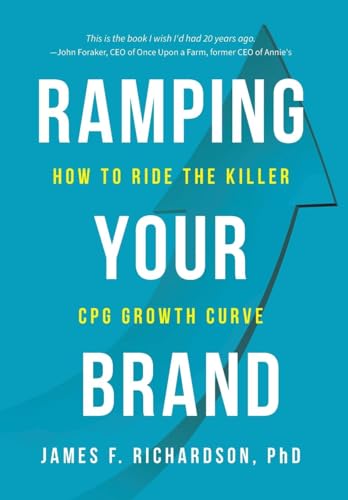CPG Branding: How to Build and Maintain a Strong Consumer Brand
Today, we're diving into the fascinating world of CPG branding. If you're wondering what CPG stands for, it's “Consumer Packaged Goods.” We all buy those everyday items, like food, beverages, cosmetics, and cleaning products. These are products that, despite their seeming simplicity, have some of the most compelling and complex branding strategies behind them.
Now, why is branding important for CPG? Well, imagine walking into your local supermarket. You're greeted by a sea of products, all jostling for your attention. What makes you reach out for one product over another amid this retail chaos? Often, it's the power of branding. A strong brand doesn't just stand out on the shelves; it builds a unique identity, cultivates customer loyalty, and can even command a higher price point.
So, how do you build a strong CPG brand? It's a mix of art and science. It involves understanding your target audience, creating a compelling brand story, leveraging design and packaging, and ensuring a consistent brand experience across all touchpoints. And let's remember to maintain that brand strength over time – because the marketplace and consumers' preferences are constantly evolving.
But don't worry if this all sounds a bit daunting. We'll break it down step by step, exploring the best practices, case studies, and innovative strategies in CPG branding. Whether launching a new product or looking to rejuvenate an existing one, this comprehensive guide is your roadmap to building and maintaining a strong consumer brand. So, please grab a cup of coffee, and let's delve into the captivating world of CPG branding together!
Table of Contents
The Elements of Strong CPG Branding
Defining your brand's identity

To build a strong Consumer Packaged Goods brand, it is essential to have a clear and defined brand identity. This can be achieved by following steps to help you identify your target audience, determine your brand values and mission, and create a brand personality that resonates with your customers.
Firstly, it is crucial to identify your target audience. Whom is your product aimed at, and what are their needs and preferences? By conducting market research, analysing customer data and studying consumer behaviour, you can gain insights into your target audience and tailor your branding efforts accordingly.
Statistics can also be used to support your branding efforts. For instance, you can use customer reviews and feedback to highlight the benefits of your product and how it has helped others. You can also use industry research and data to demonstrate why your product is superior to competitors or to highlight a particular trend or need in the market that your product addresses.
Defining your brand's identity is a critical first step in building a strong CPG brand. By identifying your target audience, defining your brand values and mission, creating a brand personality, and highlighting your USP, you can establish a clear and consistent brand message that resonates with customers and sets you apart from competitors.
- Hardcover Book
- Richardson, James F (Author)
- English (Publication Language)
- 238 Pages – 12/30/2019 (Publication Date) – Pgs Press (Publisher)
Establishing your brand's values and mission
This step is vital because it's all about creating a brand story that resonates with consumers. It's about giving them a reason to choose your brand over others. Your brand values and mission are the foundation of your brand. They're what you stand for and what you're trying to achieve.
Think of it this way: your brand values are like your company's personality traits. They're the characteristics that define your brand and help it stand out. Your mission, on the other hand, is your company's purpose. It's what you're trying to accomplish with your brand.
When you define your brand values and mission, you create a roadmap for your brand. You're giving yourself and your team a clear sense of direction and purpose. This can be helpful when making decisions about product development, marketing campaigns, and customer service.
Ultimately, your brand values and mission should be authentic and meaningful. They should reflect who you are as a company and what you believe in. Communicating your brand story to consumers will make you more likely to build brand loyalty and attract new customers.
Creating a brand personality

Your brand personality is the sum of all the experiences that consumers have with your brand. It's the feeling they get when they see your logo, hear your tagline, or interact with your customer service team. It's what keeps them coming back for more, and it's what creates brand loyalty.
So, how do you create a strong brand personality? It starts with considering your brand's voice, tone, and messaging. Your brand voice is your brand's personality. It's how your brand speaks to consumers and should be consistent across all channels.
Your brand tone is a little different. It's the way you adapt your voice to suit different situations. For example, you might use a more formal manner in a business email but a more casual style on social media.
Finally, your brand messaging is about creating content to communicate your brand personality. This includes things like your tagline, your product descriptions, and your advertising copy.
When creating your brand personality, it's essential to be authentic and consistent. Your brand personality should be a true reflection of who you are as a company and consistent across all touchpoints. This means that whether consumers interact with your brand on social media, through your website, or in person, they should feel like they're experiencing the same brand personality.
Developing a unique brand voice
Consistency is critical when it comes to brand voice. Your brand voice should be consistent across all touchpoints, from advertising campaigns to customer service interactions. This helps create a cohesive brand experience for consumers and helps build brand recognition.
But what does a strong brand voice sound like? Well, that depends on your brand and your target audience. A brand voice can be casual, conversational, formal, and professional. It can be funny and lighthearted or serious and informative. Most importantly, it's authentic and consistent with your brand values and personality.
A unique voice can help your brand stand out from the competition and create a more memorable experience for consumers. Think about some of the most successful brands – they all have a distinctive voice that sets them apart. When you hear a commercial or see an ad, you can usually tell which brand it belongs to based on its presentation.
Creating a solid brand voice takes time and effort, but it's worth it. It can help you build brand recognition, connect with consumers on a deeper level, and ultimately drive more sales. So take some time to think about your brand voice and how you want to communicate with your audience. With creativity and consistency, you can create a voice that genuinely resonates with your target audience.
Crafting a memorable brand visual identity
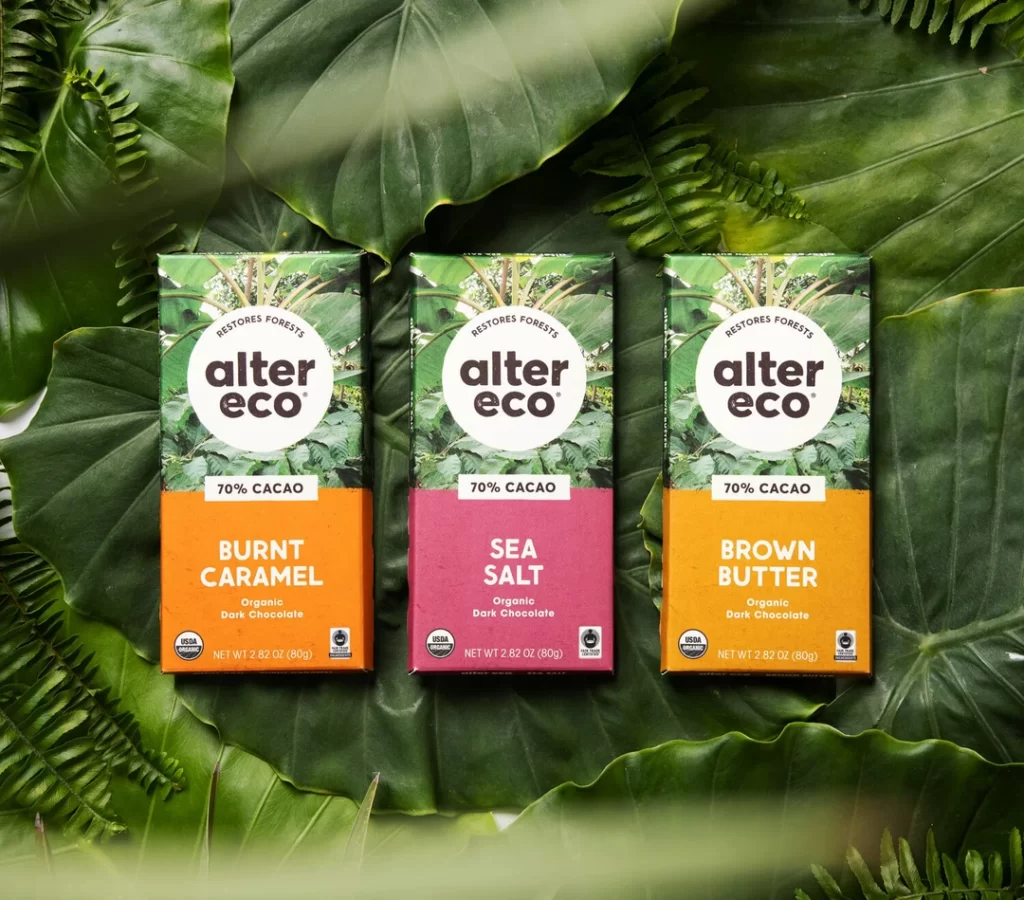
Why is having a strong visual identity so important? Well, for starters, it helps create brand recognition. When people see your logo or other visual elements, they associate them with your brand. And that's precisely what you want – to be top of mind regarding your industry or niche.
But that's not all – a solid visual identity makes your brand more memorable. When your brand has a consistent look and feel across all channels and touchpoints, it makes a lasting impression on your audience. They're more likely to remember you and come back for more.
So, investing time and resources into developing a visual identity that reflects your brand values and personality is significant. That way, you can create a lasting impression on your target audience and stand out.
Developing a Brand Strategy for CPG
Conducting market research and consumer insights
You'll need to conduct market research and gather consumer insights to do this. This involves gathering information about your target audience, such as their demographics, interests, behaviours, and pain points. Doing so, you can better understand what drives them and what they value the most.
Once you've gathered this information, you can identify key trends and insights. This can help you shape your brand strategy and ensure it resonates with your target audience. For example, you might discover that your audience is particularly interested in sustainability so you could incorporate eco-friendly practices into your business operations and messaging.
Remembering that your target audience and their needs can evolve is essential, so it's a good idea to revisit your research and consumer insights regularly. By staying up-to-date with your audience, you can continue to refine your brand strategy and ensure that you're meeting their needs.
Identifying your target audience and creating buyer personas

So, as we discussed earlier, understanding your target audience is a critical step in creating an effective brand strategy. But sometimes, it can be challenging to visualise your audience. That's where buyer personas come in.
A buyer persona is essentially a fictional representation of your ideal customer. By creating detailed personas that represent different segments of your audience, you can gain a deeper understanding of their needs, preferences, and behaviours. This can help you make more targeted messaging that resonates with them.
For example, let's say you're selling fitness equipment. You might create different personas for people looking to lose weight, those wanting to build muscle and those training for a specific sport. By understanding each persona's unique motivations, pain points, and preferences, you can create marketing campaigns that speak directly to them. This can improve the effectiveness of your marketing efforts and increase your ROI.
It's important to note that buyer personas shouldn't be based on assumptions or stereotypes. Instead, they should be grounded in actual data and insights from your market research and consumer insights. By doing so, you can ensure that your personas accurately represent your target audience and help you make more informed business decisions.
- Amazon Kindle Edition
- Mahesh, Shrikirti (Author)
- English (Publication Language)
- 118 Pages – 08/10/2018 (Publication Date)
Analysing your competition
First things first – it's essential to understand that you're not operating in a vacuum. There are likely other brands out there offering similar products to yours. That's where competitive analysis comes in.
By analysing your competition, you can better understand what they're doing well and where they fall short. This can help you identify opportunities to differentiate your CPG brand and create a more compelling value proposition. For example, if you notice that your competitors are focusing on price, you might focus on quality instead. Or, if they're all using similar packaging designs, you could experiment with something more unique and eye-catching.
When conducting competitive analysis, looking beyond just the surface-level details is essential. Dig deeper into their business operations, marketing strategies, and customer reviews. By doing so, you can better understand how they operate and how you can differentiate yourself.
Of course, it's important to remember that you shouldn't just copy your competitors. Instead, use the insights you gain from your analysis to inform your brand strategy and create something unique and valuable to your target audience.
Defining your brand positioning
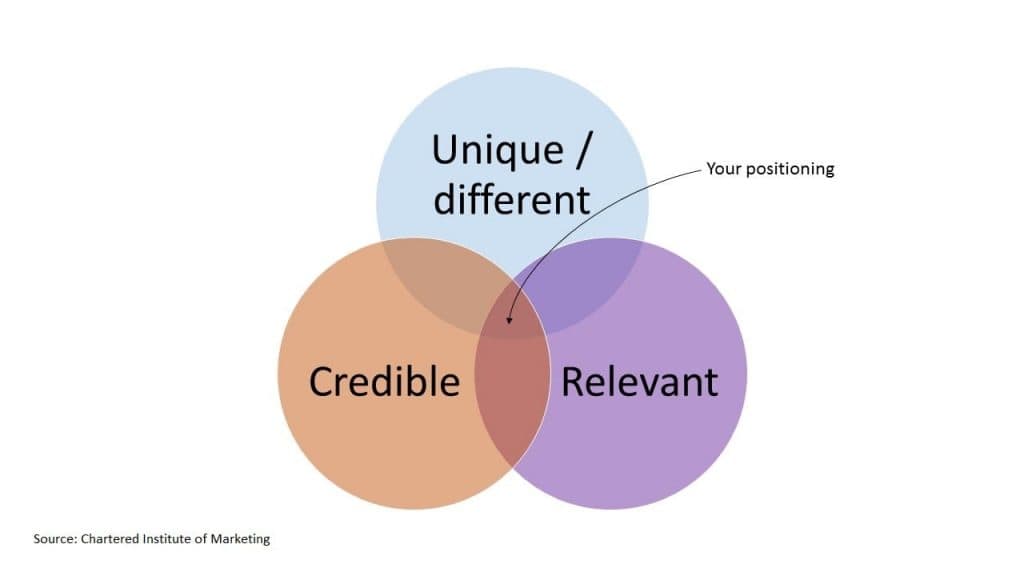
Brand positioning is a critical aspect of creating a successful CPG brand. It refers to how consumers perceive your brand concerning your competitors and the unique space it occupies in the market. Defining your brand positioning is essential to creating a solid brand strategy that sets you apart from your competitors and resonates with your target audience.
The first step in defining your brand positioning is to conduct market research and analyse your competition. This will help you understand the current landscape of your industry, identify gaps and opportunities, and determine where your brand can best fit in.
Once you clearly understand your competition and the market, you can define your brand positioning statement. This concise and compelling statement captures the essence of your brand and its unique value proposition. It should communicate what sets your brand apart from others in the market and why customers should choose it over others.
A well-defined brand positioning statement can help guide your brand strategy and messaging across all channels, from advertising and social media to product development and packaging design. It can also help you build brand loyalty and establish a solid emotional connection with your customers.
Creating a brand architecture
A brand architecture is a framework that defines the relationship between your brand and its various products or services. A robust brand architecture in the consumer packaged goods industry can help create brand recognition and make it easier for consumers to navigate your products or services.
At its core, brand architecture is all about how your brand is organised and structured. This includes elements such as brand extensions, sub-brands, and product lines. Creating a clear and well-organised brand architecture can help consumers better understand the relationship between your various products or services and create a more cohesive brand experience.
For example, a company that offers multiple product lines may choose to use sub-brands to differentiate between them. This could involve creating a distinct logo or visual identity for each sub-brand, along with unique packaging and messaging. The company can create a clear and consistent brand experience across its product portfolio.
In addition to creating brand recognition, a well-designed brand architecture can help you optimise your product strategy. By understanding the relationships between your various products or services, you can identify opportunities to leverage existing brand equity and extend your brand into new markets or product categories.
Building Brand Awareness and Equity
Developing a brand messaging framework
Your brand messaging framework includes all the key messages and talking points you want to communicate to consumers. It should be consistent across all touchpoints, from advertising to customer service.
Creating a content marketing strategy
A content marketing strategy can help you create a more engaging and memorable brand experience for consumers. It includes everything from blog posts to social media content.
Building a social media presence
Social media is an essential component of modern CPG branding. A robust social media presence can help you reach new customers, engage with existing ones, and build brand awareness. When making a social media presence, it's essential to consider the unique characteristics of each platform and tailor your content accordingly.
Leveraging influencer marketing
Influencer marketing can be a powerful tool for building brand awareness and credibility. You can reach new audiences and create engaging content by partnering with influencers who align with your brand's values and personality.
Creating a loyalty program
A loyalty program can help you retain customers and create brand ambassadors. You can encourage customers to stick with your brand and spread the word to others by offering rewards and incentives for repeat purchases.
Maintaining a Strong CPG Brand
Monitoring and measuring brand performance
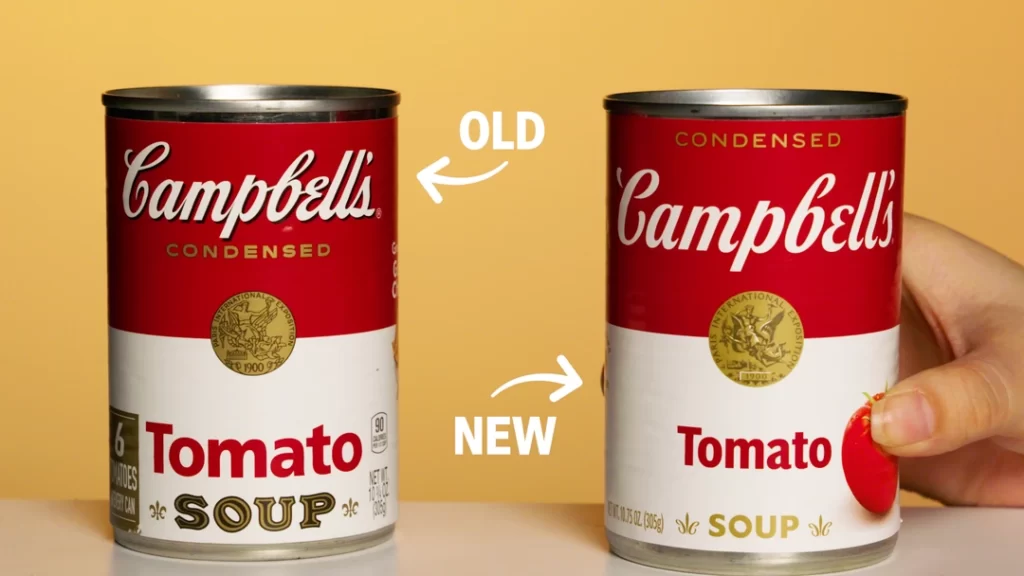
Maintaining a solid and recognisable brand is crucial in the consumer packaged goods industry. However, creating a successful brand is only half the battle – it's equally essential to continuously monitor and measure its performance to maintain its strength and relevance.
One of the key metrics to track is brand awareness, which refers to the level of familiarity and recognition that consumers have with your brand. Measuring brand awareness can help you understand your marketing efforts' effectiveness and identify improvement areas. You can track this metric through surveys, social media engagement, website traffic, and customer feedback forms.
Another important metric is customer satisfaction, which measures how happy and loyal your customers are to your brand. By monitoring customer satisfaction, you can identify areas for improvement and make necessary adjustments to your products or services to better meet the needs and expectations of your customers.
In addition to these metrics, tracking other key performance indicators (KPIs) such as sales, revenue, market share, and customer retention rates is essential. Analysing these metrics can help you identify trends, opportunities, and areas for improvement and make data-driven decisions to optimise your business operations.
- Amazon Kindle Edition
- Ingrassia, Lawrence (Author)
- English (Publication Language)
- 260 Pages – 01/28/2020 (Publication Date) – Henry Holt and Co. (Publisher)
Managing brand crises
No matter how well-managed and successful a CPG brand may be, it is not immune to crises. From product recalls to negative social media posts, unexpected issues can arise that can harm a brand's reputation and potentially cause long-term consequences. Therefore, it's essential to have a crisis management plan in place to address these issues quickly and effectively.
A crisis management plan is a set of procedures that outlines how your brand will respond during a crisis. The plan should include a designated crisis management team, clear communication channels, and predefined protocols for assessing, containing, and resolving the issue.
In a crisis, time is of the essence. A quick and effective response can help mitigate the damage to your brand's reputation and prevent long-term consequences. Therefore, it's crucial to have a crisis communication plan that outlines how you will communicate with the public, the media, and other stakeholders during a crisis. This can involve drafting pre-approved statements, identifying spokespersons, and using social media and other channels to communicate with your audience promptly and transparently.
In addition to having a crisis management plan, it's also essential to regularly assess and update your plan as needed. This can involve conducting crisis simulation exercises, analysing past crises, and staying up-to-date with the latest trends and best practices in crisis management.
By having a well-designed crisis management plan in place, you can help minimise the impact of a crisis on your brand and prevent long-term damage to your reputation. You can also demonstrate to your customers, stakeholders, and the public that you are prepared to handle unexpected challenges, which can help build trust and loyalty over time.
Keeping up with industry trends
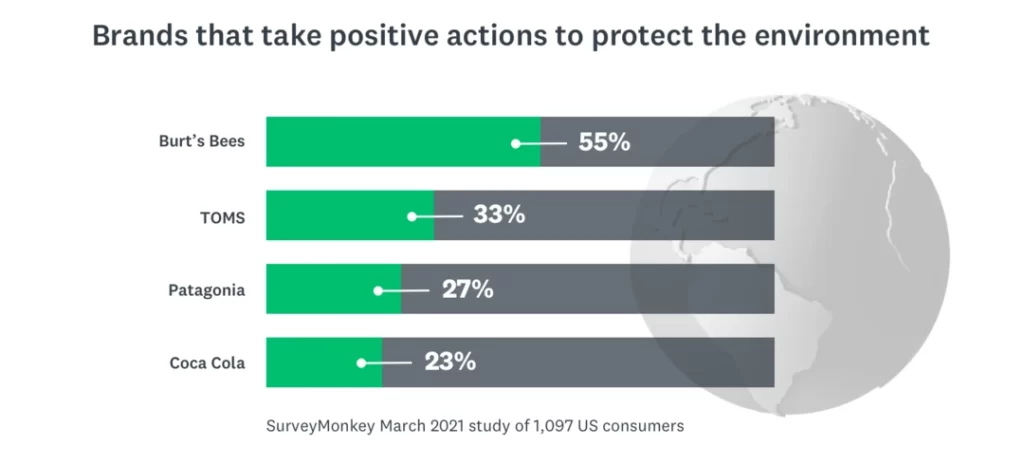
The CPG industry is dynamic and rapidly evolving, with new trends and innovations regularly emerging. To stay competitive and thrive in this industry, it is vital to keep up with the latest developments and understand how they can impact your business.
One way to stay up-to-date is by following industry publications, attending trade shows and conferences, and networking with other professionals in the field. These activities can help you learn about new technologies, trends, and best practices and connect you with potential partners and collaborators.
Regularly conducting market research and analysis can help you identify emerging consumer needs and preferences, leading to new product opportunities and competitive advantages. By leveraging data and insights, you can tailor your product offerings to meet the evolving demands of the marketplace and position yourself as a leader in the industry.
Innovation is also crucial to success in the CPG industry, and staying on top of new developments can give you a competitive edge. From new packaging materials and designs to integrating digital technology and eCommerce strategies, keeping an eye on the latest trends can help you identify growth opportunities and improve your overall business operations.
It is continuously innovating and evolving.
Finally, you must continuously innovate and evolve to maintain a strong CPG brand. This includes everything from product development to marketing strategies. By staying ahead of the curve and embracing change, you can ensure that your brand remains relevant and appealing to consumers.
Conclusion
In conclusion, building and maintaining a solid Consumer Packaged Goods brand in today's market is a multifaceted endeavour. It requires a deep understanding and analysis of the market, meticulous crafting of a unique brand identity, strategic use of channels for promotion, and constant adaptation to evolving consumer preferences and technological advancements.
A compelling brand identity is essential as the foundation of all branding efforts. It must resonate with your target audience, differentiate your product from the crowd and build lasting relationships. Clear, consistent, and customer-centric messaging is critical to this process, emphasising the brand's unique selling proposition and value.
The dynamic digital landscape presents both challenges and opportunities for CPG branding. Leveraging the power of digital platforms, data analytics, and social media can significantly amplify a brand's reach and engagement, but it requires thoughtful planning and execution. Brands that authentically engage consumers online while offering seamless offline experiences are set to prosper.
Moreover, the importance of responsiveness and adaptability must be considered. Brands should be agile, ready to pivot their strategies based on market trends, consumer feedback, and changing environments. Notably, sustainability and social responsibility have emerged as significant factors influencing brand preference, and brands that can authentically align with these values have a competitive edge.
Finally, the journey of CPG branding is a continuous one. It continues beyond creating a memorable logo or launching a successful campaign. It is about fostering an ongoing connection with consumers, constantly refining the brand, and ensuring that every touchpoint contributes to a cohesive and compelling brand story.
In a world where consumers are faced with an abundance of choices, the brands that succeed will be those that can create meaningful, memorable, and valuable experiences. Building and maintaining a strong CPG brand is not a simple task, but the right approach can yield significant rewards, fostering loyalty and driving growth for years.
Last update on 2024-06-01 / Affiliate links / Images from Amazon Product Advertising API

